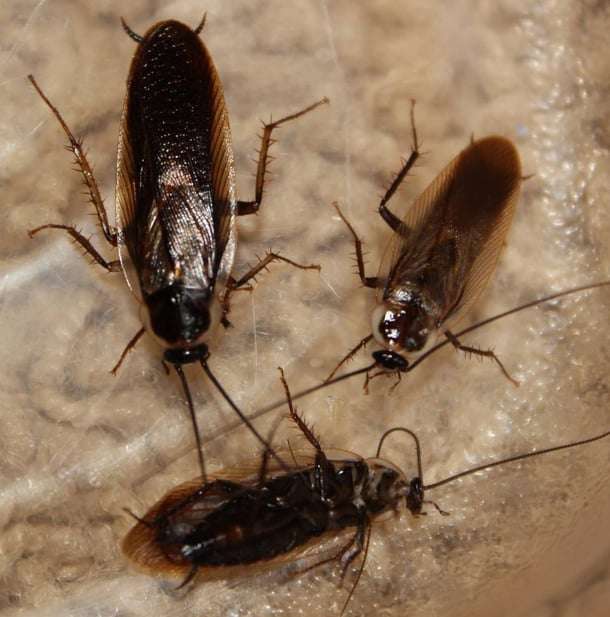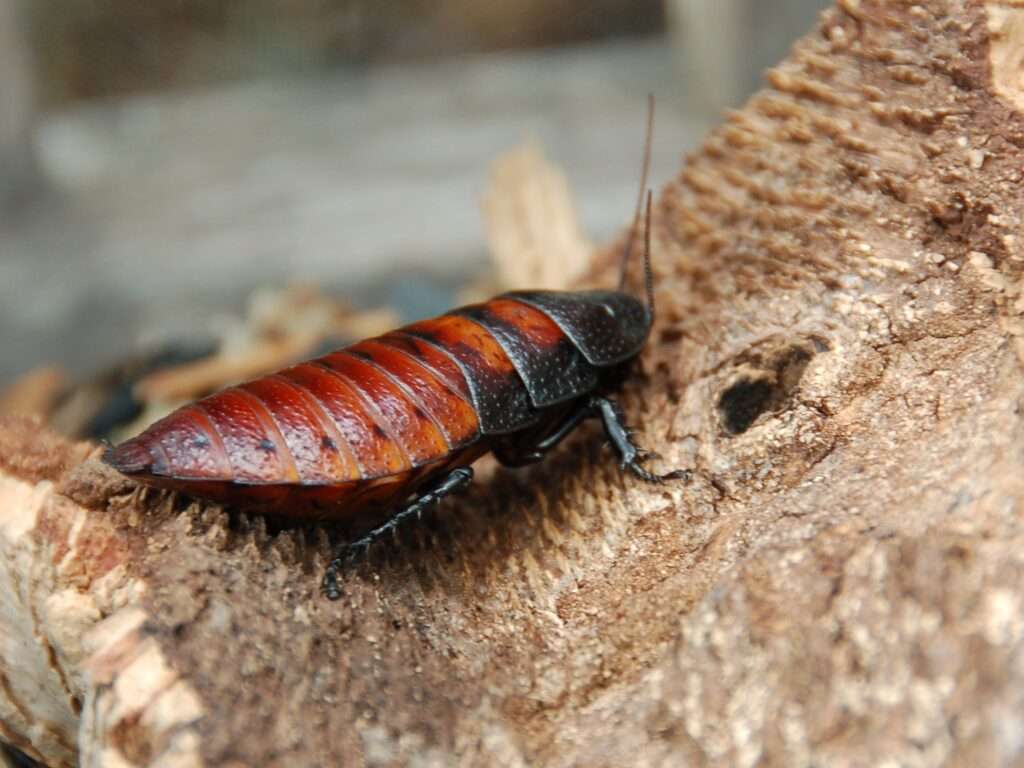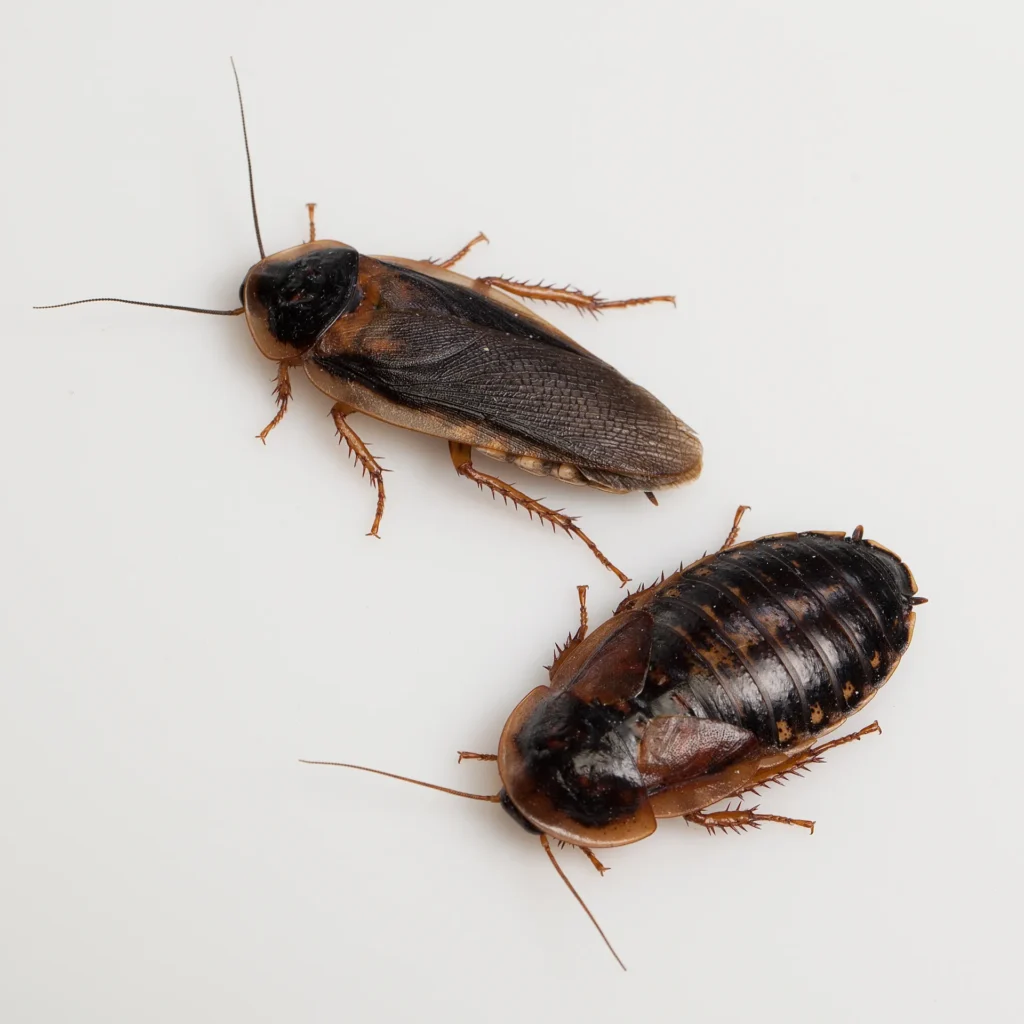
Central and Eastern North America are home to the Pennsylvania wood cockroach (Parcoblatta pensylvanica), also known as the Pennsylvanian cockroach.
The Pennsylvania wood cockroach is the one that is most likely to be found in firewood of all cockroach species in North America.
Appearance
- Because of their extreme sexual dimorphism, wood roaches have drastically varied male and female appearances.
- Both sexes have segmented bodies, two long antennae, and six long, segmented legs. The wood roach, like many cockroaches, has antennae that are longer than their bodies.
- They use these antennae to detect edible materials like rotting wood and leaves.
- The head, thorax, and abdomen are the three parts of a cockroach’s body. When looking down at a cockroach, see this instead of the head because the pronotum, a hard shield, covers the head.
- The thorax is where the wings and first pair of legs are attached, and the abdomen is where the second and third pairs of legs are attached.

Diet
Although cockroaches are all omnivores, they each have a distinct dietary preference. While some species eat only leaves, others like fruit. Still more depend nearly exclusively on rubbish, food scraps, and other human waste.
Everywhere there is forest debris for them to eat, such as fallen trees, pine needles, leaves, and bark, wood roaches can be found.
Habitat
The Pennsylvania wood cockroach doesn’t genuinely enjoy being indoors, unlike pestilential species of cockroach (like the German roach). They are a species that thrives in forests, and the majority of them live their entire lives there, feeding on greens and decaying wood.
Lifespan
The nymphal stage normally lasts 10 to 12 months, but its lifespan is up to 2 years.
Temperature
The egg stage lasts around 80 °F in 34 days. The average adult female lives for several months.
Life Cycle
Wood roaches begin their lives as eggs enclosed in ootheca, or egg cases. The average egg case holds 32 eggs, and the incubation period is 34 days. Females deliver the egg case complete and hide it for protection under loose bark or within decaying trees.
The larval wood roaches are soft-shelled and completely white when they first hatch. They become darker in color as they become bigger, and their exoskeletons are tougher. On average, they spend 10 to 12 months in the nymph stage, although it can extend up to two years. The nymphs go through a process known as molting during this stage where they continuously lose and grow back their exoskeleton.
The nymphs develop into sexually mature adults following their last molt. Sadly, the adult lifespan of the wood roach is usually a short few months. Nymphs are more closely related to mahogany brown than adults, who are dark brown in color. Adult males look extremely different from adult females due to their long bodies and tan wings.
Not Kept as a Pet; Why?
When wood roaches decide to nibble on your wood siding or wood shingles, that’s when you should be most concerned. They don’t have a very high standard when it comes to leaf litter and easily digested wood, but you do want to prevent them from nibbling on your house. You might wish to use roach traps or even insecticide spray if you think you have a wood roach infestation. However, Pennsylvania wood roaches are generally not dangerous to people.
Table





